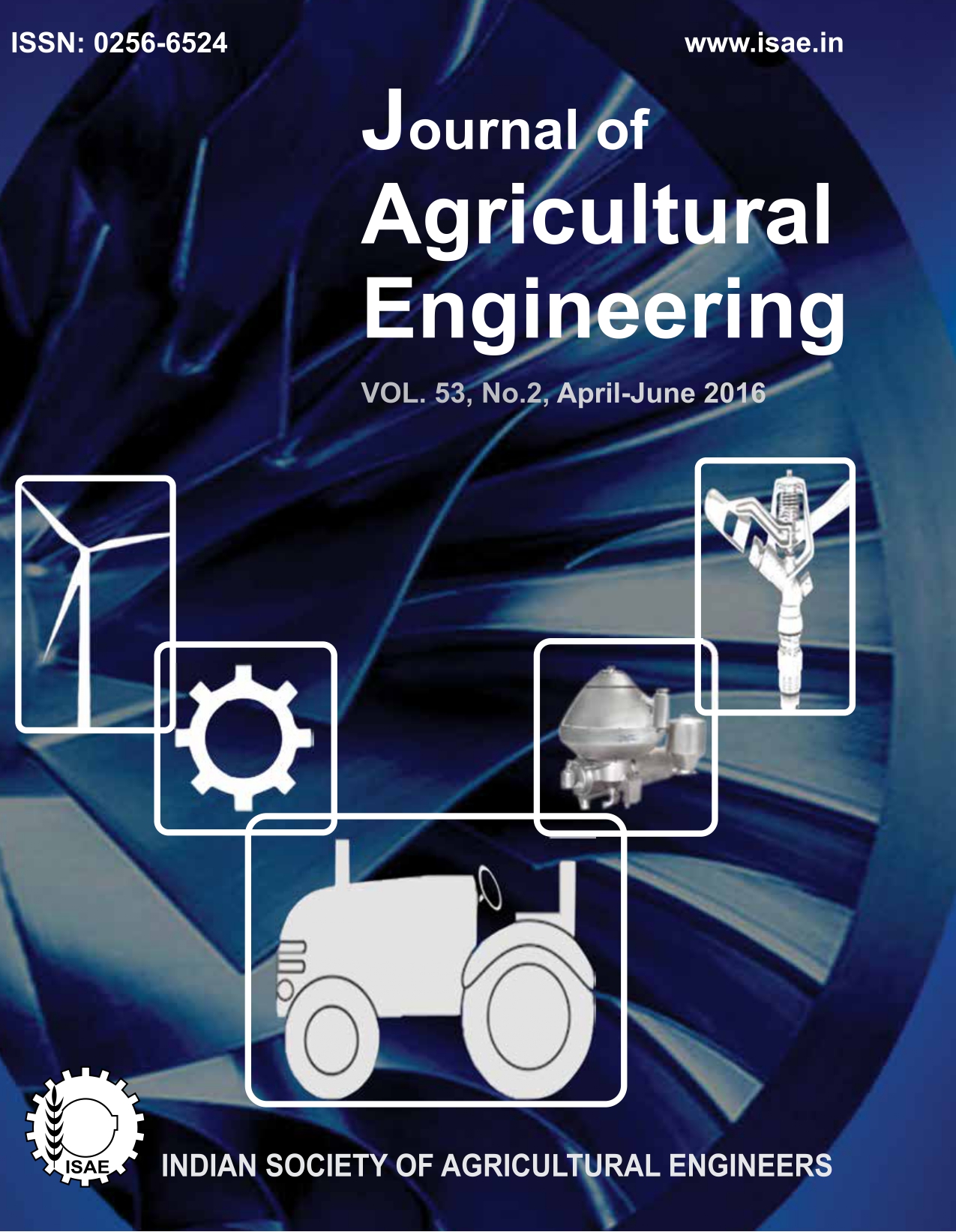Hydrological Characterization of Dholbaha Watershed in Shivalik Foothills using RS and GIS
DOI:
https://doi.org/10.52151/jae2016532.1598Keywords:
Hydrological characterization, morphometric analysis, remote sensing, GIS, stream order, drainage density, watershed shape, DEMAbstract
Hydrological characterization forms the basis of planning soil and water conservation treatments in a watershed. The morphometric analysis of Dholbaha watershed, in Shivalik foothills of Punjab was carried out using the IRS LISS-IV, Cartoset-1 merged satellite data, ASTER DEM and ArcGIS-9.3 software. Around 55% of watershed area had land slope higher than 10% with forest as major land use. The watershed was categorised as a 5th order watershed having 279 streams of length 191.73 km, out of which 213 were of 1st order. The drainage pattern was dendritic in nature with stream frequency of 4.67 no. km-2 and mean bifurcation ratio of 3.9. Both length as well as number of streams decreased with increase in the order of streams. Drainage density of 3.21 km.km-2 with fine drainage texture (7.34 no.km-1) and length of overland flow of 150 m in the watershed might result into high peaked hydrographs. The form factor, circularity ratio and elongation ratio indicated that the watershed was less elongated in shape, associated with medium to high relief, had moderately permeable sub-soil conditions generating moderate peak discharge and runoff volume resulting in high soil erosion necessitating urgent conservation measures to control siltation of the reservoir at the outlet of the watershed.
References
Agarwal C S. 1998. Study of drainage pattern through aerial data in Nahagarh area of Varansi District U.P. J. Indian Soc. Rem. Sen., 26, 169–75.
Anon. 1970. Soil Survey Manual. All India Soil and Land Use Survey Organization, IARI, New Delhi, pp:72.
Anon. 2011. Integrated Watershed Management Programme. Detailed Project Report, Hoshiarpur. Department of Soil and Water Conservation, Chandigarh, Punjab, 1, 30-31.
Anon. 2014. A Project Report on Land Resource Mapping for Dholbaha Wetland Ecosystem UsingRemote Sensing and GIS. Punjab Remote Sensing Centre, Ludhiana, pp: 24.
Das A K; Mukherjee S. 2005. Drainage morphometry using satellite data and GIS in Raigad district Maharashtra. J. Geol. Soc. India, 65, 577-86.
Dwivedi S C. 2011. Morphometric analysis of subwatershed in bah area of Agra district using remote sensing and GIS techniques. XII ESRI India User Conf.,Noida, India, 1-11.
Hadley R F; Schumm S A. 1961. Hydrology of the upper Cheyenne river basin. U.S Geol. Survey Water Supply, 1, 137-98.
Horton R E. 1932. Drainage basin characteristics. Trans. Am. Geophy. Union, 13, 350-61.
Horton R E. 1945. Erosional development of streams and their drainage basins hydro physical approach to quantitative morphology. Geolol. Soc. Am., 56, 275-370.
Kumar H; Mittal H K; Singh R S; Purohit R C; Singh P K. 2007. Application of remote sensing and GIS in planning of soil and water conservation measures. J. Agric. Eng., 44(1), 79-81.
Miller V C. 1953. A quantitative geomorphic study of drainage basin characteristics in the Clinch mountain area Virgina and Tennessee. Department of Geology, Columbia University, New York, 3, 389-402.
Pareta K; Pareta U. 2012. Integrated watershed modeling and characterization using GIS and remote sensing techniques. Indian J. Eng., 1, 81-91.
Reddy G P O; Maji A K; Gajbhiye K S. 2002. GIS for morphometric analysis of drainage basins. GIS lndia, 4, 9-14.
Sahoo N; Rajput T B S; Rao A R. 2008. Geoporphological parameters based watershed sediment yield estimation. J. Agric. Eng., 45(1), 47-56.
Sarangi A; Singh D K; Singh A K. 2007. Development of a geomorphology based model for prediction of surface runoff from ungauged watersheds. J. Agric. Eng., 44(4), 23-30.
Schumn S A. 1956. Evolution of drainage systems and slopes in badlands at Perth Amboy New Jersey. Bull. Geol. Soc. Am., 67, 597-646.
Smith K G. 1954. Standards for grading texture of erosional topography. Am. J. Sci., 248, 655-68.
Strahler A N. 1957. Quantitative analysis of watershed geomorphology. Trans. Am. Geophys. Union, 38, 913-20.
Strahler A N. 1964. Quantitative geomorphology of drainage basins and channel networks. In: Chow V T (Ed.) Handbook Appl Hydrol., McGraw-Hill Book Company, New York, 4-11.
Vittala S; Srinavasa G S; Honnegowda. 2004. Morphometric analysis of sub-watersheds in the Pavagada area Tumkur district south India using remote and GIS techniques. J. Indian Soc. Rem. Sen., 32, 235-51.














